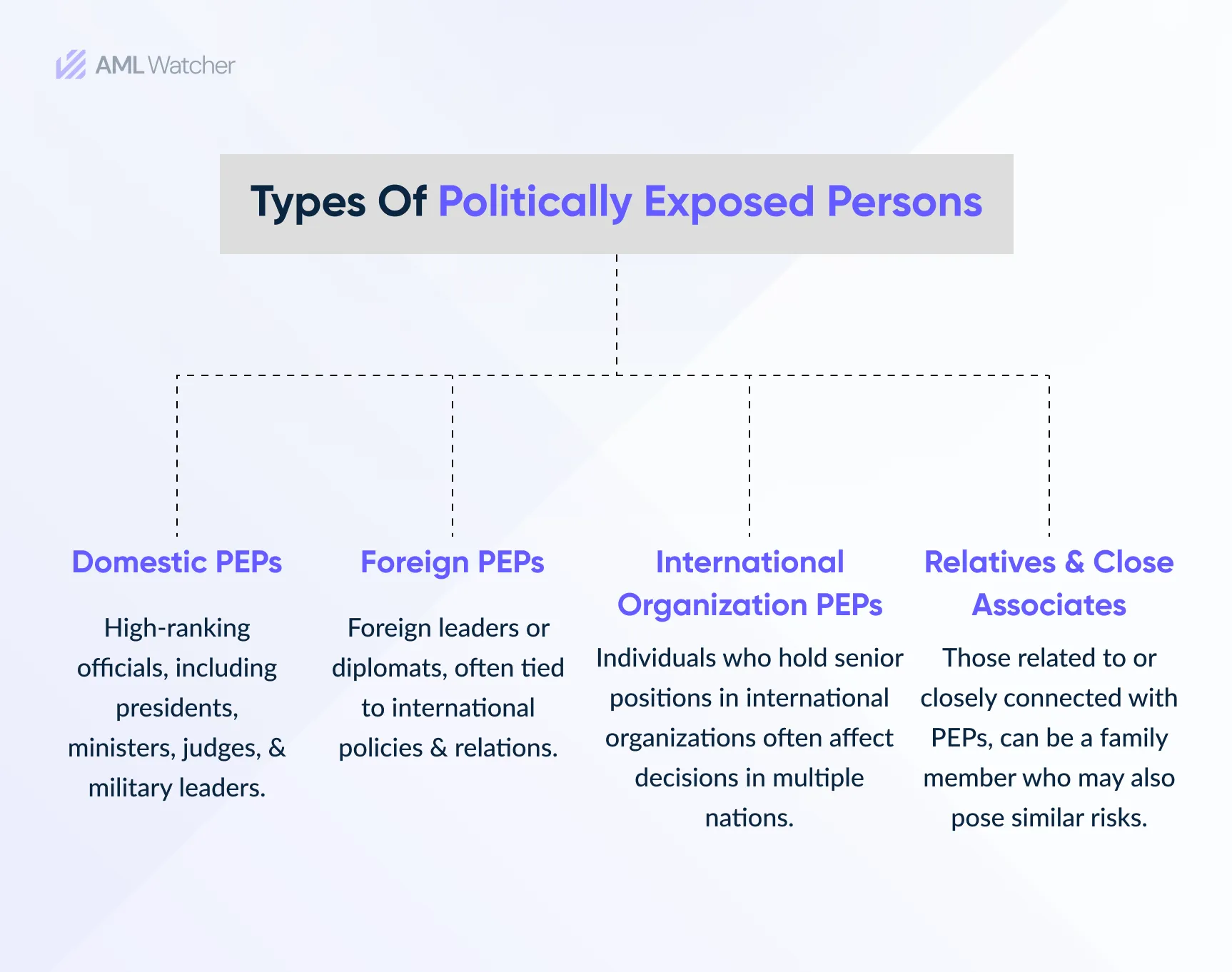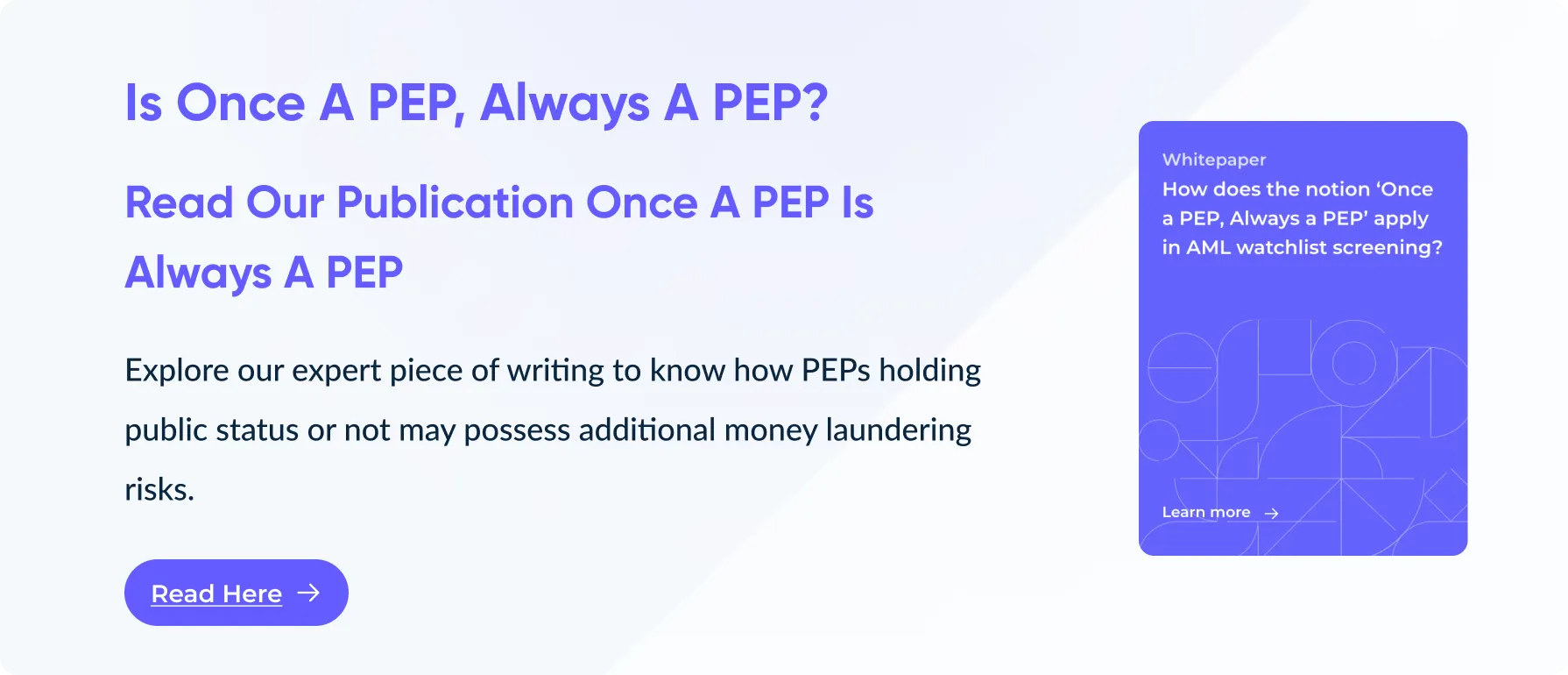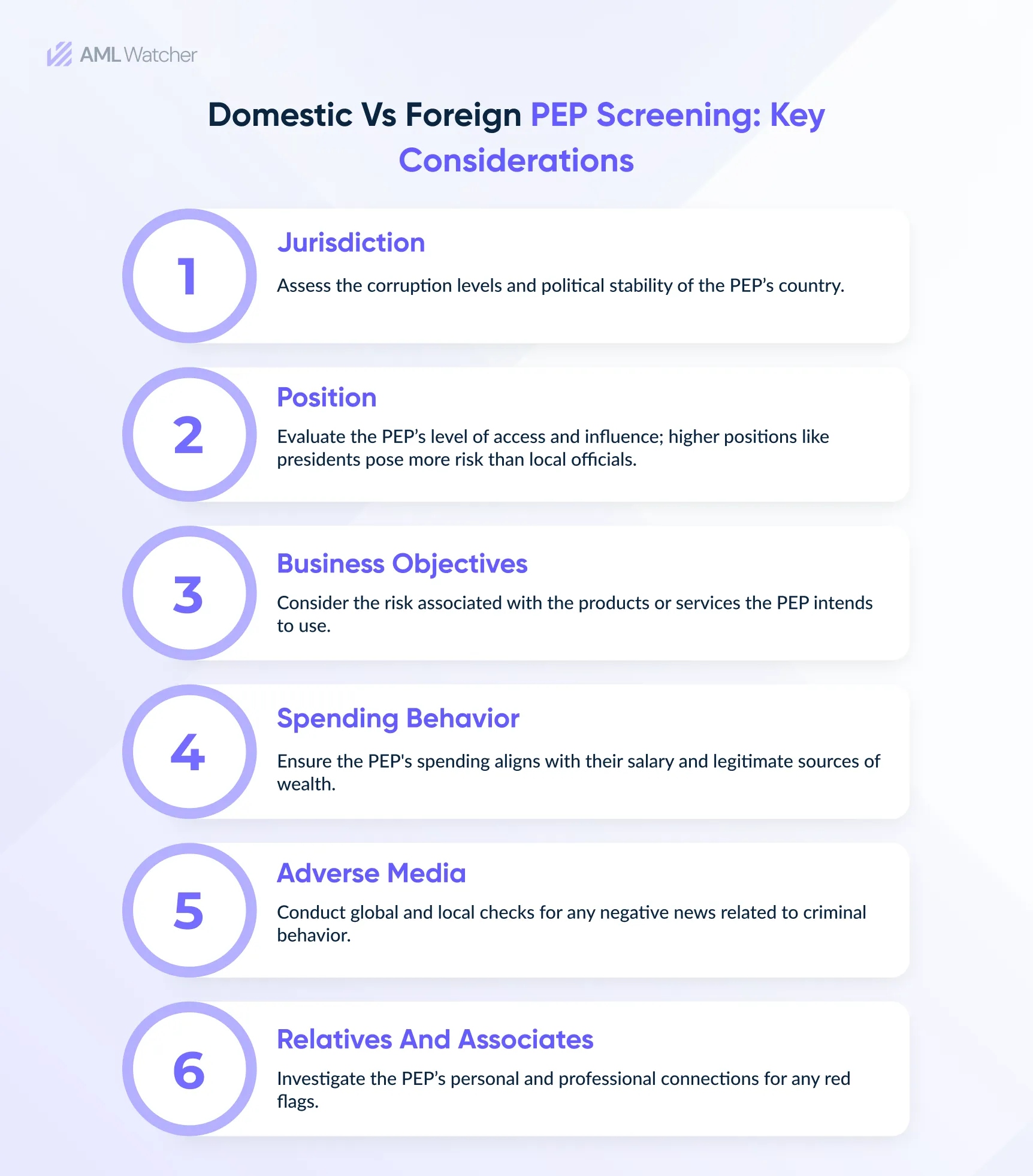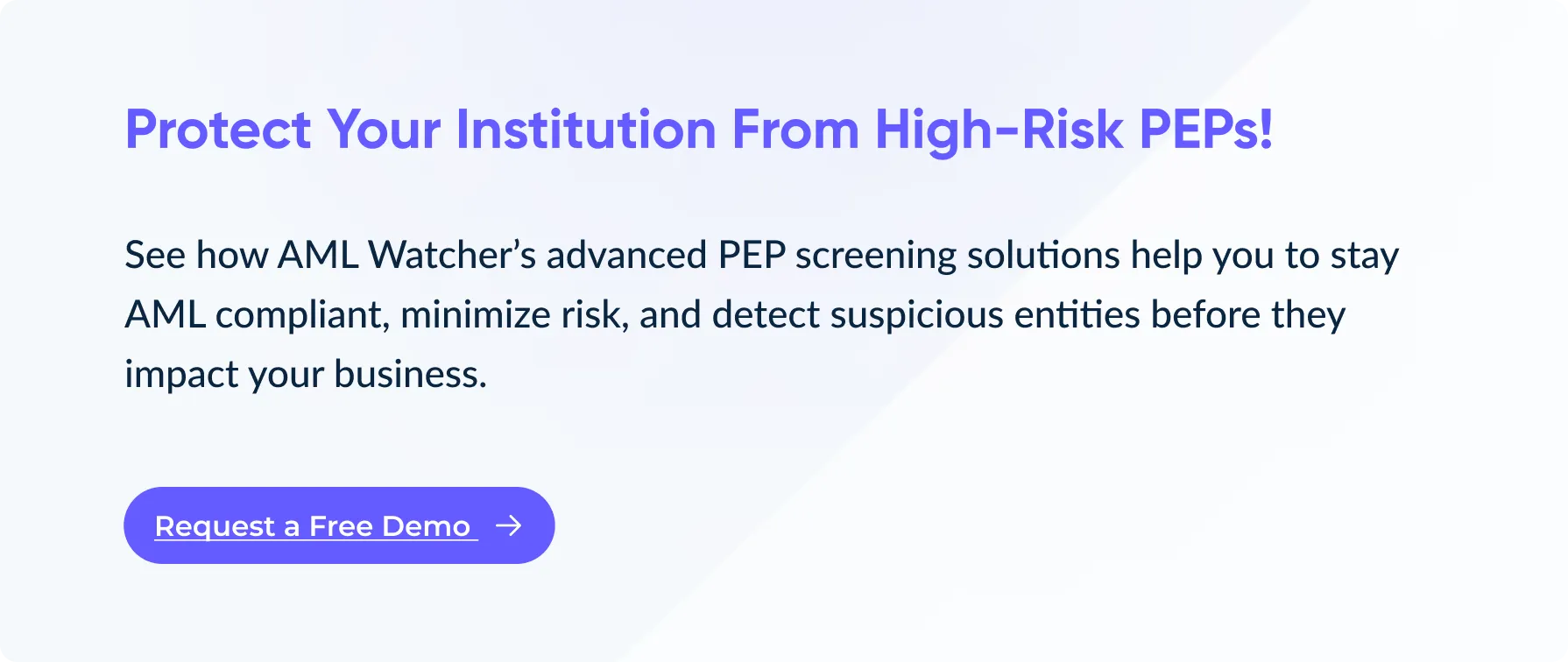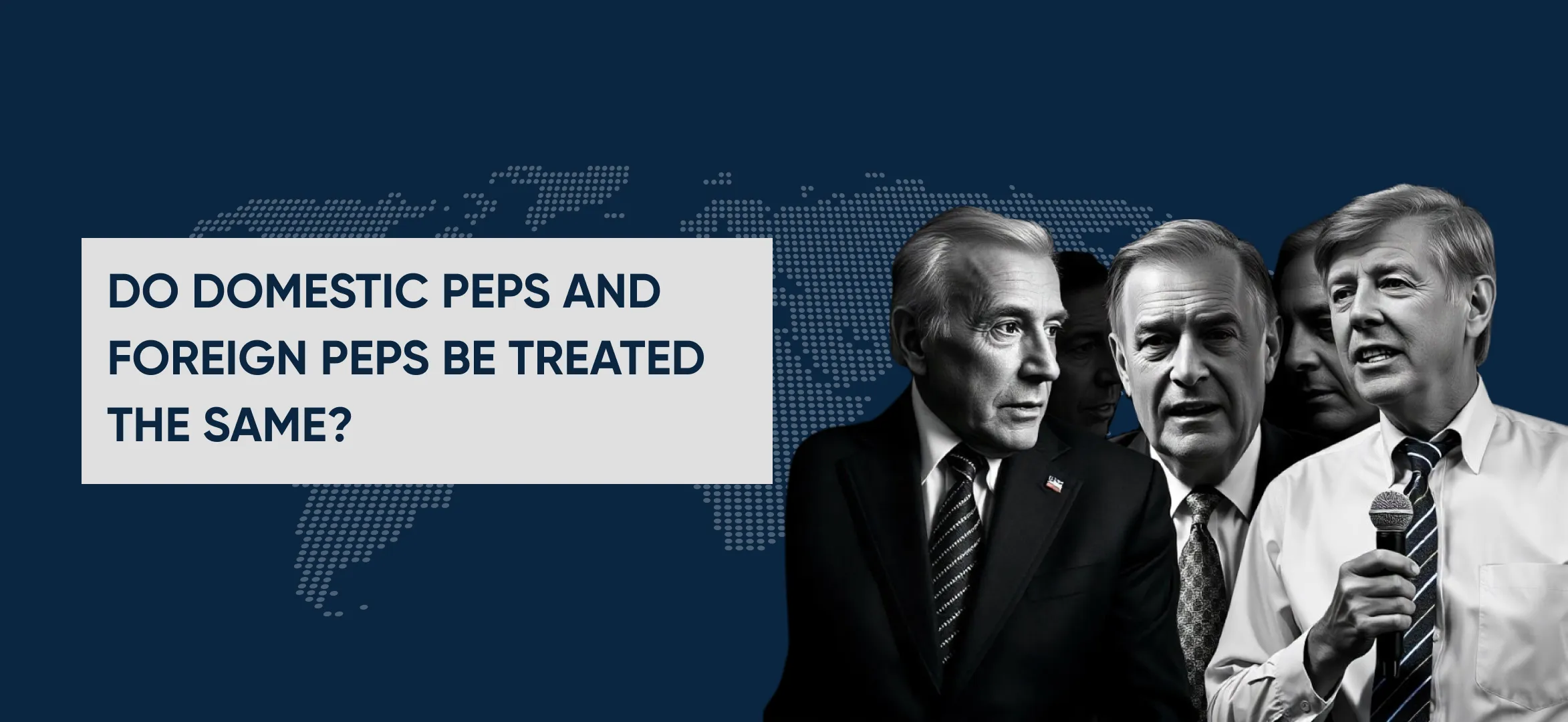
Do Domestic PEPs And Foreign PEPs Be Treated The Same?
Are Politically Exposed Persons (PEPs) truly the time-ticking bombs of financial crime, or is the threat exaggerated?
People share different arguments about it and history also shows us things that we can’t ignore.
From the backroom deals of 18th-century London, where Robert Harley, head of the British Treasury, was accused of taking kickbacks during the South Sea Bubble scandal, to today’s PEPs headlines of billion-dollar embezzlement and terror financing, one thing is clear:
PEPs possess the authority and power that makes them more vulnerable to money laundering, corruption, bribery, and financial crimes.
In his book, Money Laundering: A Guide for Criminal Investigators, John Madinger illustrates how high-risk individuals holding government and public offices conceal illicit wealth through difficult money laundering schemes, using their power and access to public money.
High-risk PEPs often prefer to use techniques like creating fake identities and businesses in the name of Relatives and Close Associates (RCAs) and establishing shell companies to move their illicit money from one place to another.
This is why FATF recommendations 12 and 22 mandate the implementation of comprehensive AML compliance efforts, detailed screening, and continuous monitoring for financial institutions and designated non-financial businesses and professions (DNFBPs) when making business deals with domestic or foreign PEPs to understand and manage their potential risks clearly.
Though not all PEPs are high risk some need more investigation than others. Thus, financial institutions and DNFBPs must distinguish between foreign and domestic PEPs and their associated risk levels for better compliance efforts.
Now this may raise an important question;
Do foreign PEPs pose more threats than domestic PEPs and how can institutions manage challenges while dealing with these PEPs?
To better understand this, why not first explore the difference between Foreign PEPs and Domestic PEPs, the challenges financial institutions face with their varying risks, and what measures these institutions should take to reduce their risks?
Who Falls Under PEPs? A Look at the Different Categories of These Public Figures
Understanding the diverse categories of Politically Exposed Persons (PEPs) is essential for effective risk management in AML compliance. This exploration delves into the various types of public figures who fall under the PEP classification and their implications for regulatory oversight.
Domestic Politically Exposed Persons
FATF defines Domestic PEPs as “those individuals who once held or are holding prominent public offices either in the Judiciary, Executive, or Legislative departments.”
Due to their ‘influential power, connections, and access to public wealth, these individuals are more vulnerable to financial crimes and pose more risks for financial institutions.’
Foreign Politically Exposed Persons
As per FATF, individuals “who are or have been holding prominent public positions in foreign countries fall under the category of foreign politically exposed persons.”
“Individuals with such power domains are more vulnerable and are higher-risk individuals than other types of PEPs.”
Key Reasons For PEPs Being Considered High-Risk
Politically Exposed Persons (PEPs) carry a higher risk profile for several reasons:
- Access to Public Funds: PEPs, due to their influence, often have access to government resources that can be misused for their personal gain or criminal activities such as money laundering and embezzlement.
- Higher chances to Conceal Illicit Wealth: The state power behind them allows them to easily hide illicit funds they acquired through illegal activities like corruption and bribery.
- Association with High-Risk Individuals: PEPs may have ties to individuals involved in financial crime, heightening their risk chances of being involved in such cases.
Therefore, screening, investigating, and monitoring their criminal backgrounds and current activities is essential under the FATF recommendations.
DO ALL PEPs Carry the Same Risk Level?
The Financial Action Task Force does not treat all PEPs at the same risk level. However, the body recognizes that the risk level of each PEP depends on what position and influence they hold, where they live, their association, and their access to wealth.
As we know foreign PEPs generally pose a higher risk and require additional diligence. But one thing that every organization needs to understand is that a domestic PEP is a foreign PEP for another country.
All domestic PEPs may seem lower risk locally, but they would be viewed as higher-risk individuals in other jurisdictions.
So this makes one thing crystal clear: conducting business with PEPs either domestically or on foreign land always poses potential risks, thus creating a strict need for financial institutions to implement comprehensive diligence on them.
Global AML Requirements For PEPs
Global regulatory frameworks mandate that companies must adhere to enhanced due diligence (EDD) protocols for managing the risks associated with PEPs.
For instance, the FATF’s recommendations include specific guidelines for dealing with PEPs, necessitating that under international AML standards, financial institutions must apply EDD to PEP customers.
This enhanced due diligence involves a risk-based approach to verifying the source of both domestic and foreign PEP’s funds and wealth.
Now are you thinking of adopting a risk-based approach to complying with AML regulations but requiring credible and efficient screening data providers that will cater to all your PEP screening needs?
Your search may end here!
How?
AML Watcher offers a powerful and adaptable PEP screening solution that successfully screens both domestic and foreign PEP profiles with advanced features designed to meet international AML compliance requirements.
How AML Watcher Can Help Institutions?
AML Watcher ensures thorough PEP screening in various regions by;
-
Offering Broader PEP Definitions and Global Reach
AML Watcher screens PEPs from 235+ regions, ensuring comprehensive coverage for both well-known and lesser-known areas.
The platform unifies all PEP definitions from FATF, FinCEN, FCA, and others, ensuring that PEP screening is consistent, no matter the jurisdiction.
-
Providing Localized and International Data Sources
For domestic PEPs, AML Watcher integrates localized data from national political directories, government publications, and regional news outlets.
At the same time, it provides global PEP coverage for foreign PEPs using international databases like those from the United Nations, EU, and FATF.
This dual approach ensures thorough coverage across both local and international landscapes.
-
Sharing Comprehensive Global Coverage
AML Watcher offers broader PEP screening across various jurisdictions, including regions with populations under 100,000, disputed territories, and conflicted zones.
This ensures that both foreign and domestic PEPs, regardless of their location, are accurately screened, even in hard-to-track or under-regulated areas where corruption risks may be underestimated but still present.
-
Covering All PEP Risk Levels 1-4
AML Watcher stands out by covering risk levels 1-4, ensuring thorough screening of both domestic and foreign PEPs.
Unlike competitors focused mainly on high-risk individuals, AML Watcher includes lower-risk PEPs, offering a complete risk assessment.
This helps institutions manage resources efficiently, stay compliant, and adapt monitoring as risks evolve.
-
Delivering Real-Time Monitoring Of Each Region
AML Watcher enables real-time screening of PEPs from high-risk foreign regions, such as those involved in political instability, conflict, or corruption.
This feature allows institutions to quickly detect and address emerging risks while maintaining up-to-date profiles for domestic PEPs who might engage in risky cross-border activities.
-
Ensuring Coverage for Controversial Regions
AML Watcher excels in screening PEPs from disputed, conflict-ridden, and isolated regions.
Foreign PEPs operating in these areas often present heightened risks due to a lack of oversight, and AML Watcher’s specialized coverage ensures that even these challenging jurisdictions are carefully monitored for compliance purposes.
-
Providing Seamless Risk Management
AML Watcher’s screening process adapts easily to various jurisdictional regulations, whether dealing with domestic PEPs or foreign ones.
It helps institutions align their risk management strategies with local laws for domestic PEPs while addressing global regulations for foreign PEPs, ensuring compliance across the board.
AML Watcher’s combination of local precision and global reach makes it the ideal solution with diversified data sources for effectively managing and screening both domestic and foreign PEPs, ensuring compliance across various regulatory environments and minimizing potential risks.
We are here to consult you
Switch to AML Watcher today and reduce your current AML cost by 50% - no questions asked.
- Find right product and pricing for your business
- Get your current solution provider audit & minimise your changeover risk
- Gain expert insights with quick response time to your queries

